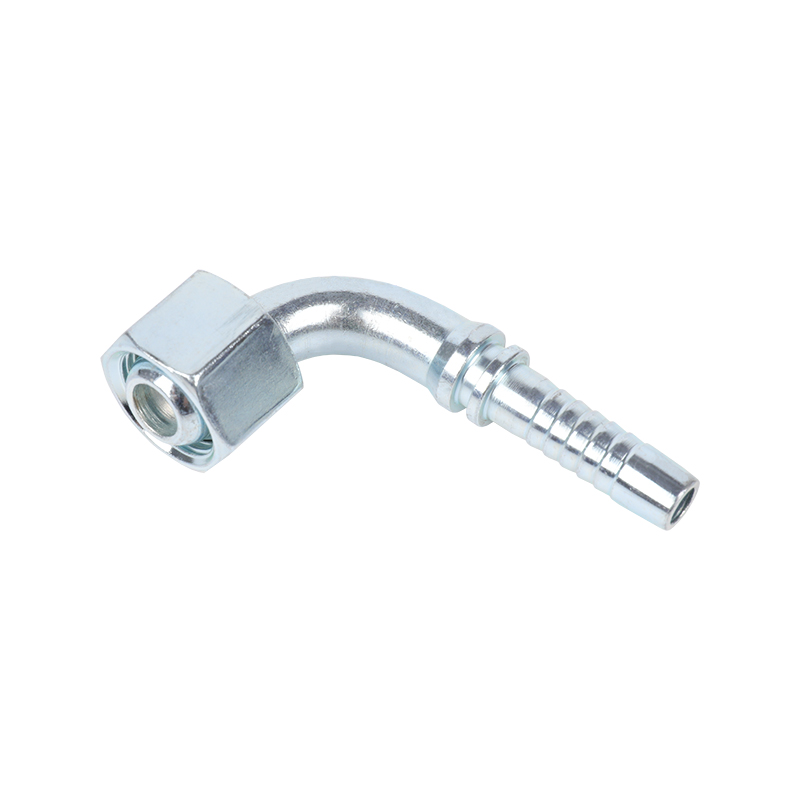What are the differences between steel hydraulic fittings and fittings made from other materials?
Author:admin Date:2023-07-10
The choice of materials for hydraulic fittings plays a crucial role in the overall performance and longevity of the system. While there are various materials used for hydraulic fittings, let's compare steel hydraulic fittings with fittings made from other materials:
- Strength and durability: Steel hydraulic fittings are known for their high strength and durability. They can withstand high pressure, vibration, and mechanical stress without deformation or failure.
- Resistance to temperature and corrosion: Steel fittings can handle a wide range of temperatures and have excellent corrosion resistance, making them suitable for various harsh environments.
- Wide compatibility: Steel fittings are compatible with different fluids commonly used in hydraulic systems, such as oil, water, and hydraulic fluids.
- Cost: While steel hydraulic fittings may be relatively more expensive than fittings made from some other materials, they offer superior strength and durability, offsetting the initial investment with longer-lasting performance.
2. Fittings made from other materials (e.g., brass, aluminum, stainless steel, or plastic):
- Weight: Fittings made from materials like brass or aluminum are generally lighter than steel fittings, which can be advantageous in weight-sensitive applications.
- Corrosion resistance: Some materials, such as stainless steel or plastics like PVC, may offer excellent resistance to corrosion and chemical degradation.
- Cost: Fittings made from materials like brass, aluminum, or certain plastics can be more affordable compared to steel fittings.
- Fluid compatibility: Different materials have varying degrees of compatibility with specific fluids. It is important to consider the compatibility of the fitting material with the fluid used in the hydraulic system.
90 Degree DK Metric Female multi seal Hose Fitting 20191

Stainless steel hydraulic fittings are fittings made of stainless steel that are used to connect hydraulic hoses, tubes, and pipes in hydraulic systems. These fittings are designed to withstand high pressures and temperatures, making them suitable for use in a wide range of hydraulic applications. Some common types of stainless steel hydraulic fittings include: Adaptors: These fittings are used to connect two pipes, tubes, or hoses of different sizes or types. They can be male-to-female, male-to-male, or female-to-female. Couplings: These fittings are used to connect two hoses or tubes together. They can be permanent or reusable, depending on the type of coupling. Elbows: These fittings have a bent shape and are used to change the direction of the fluid flow. They can be 90-degree or 45-degree elbows, depending on the angle of the bend. Tees: These fittings have a T-shaped body and are used to split the fluid flow into two or more branches. Flanges: These fittings have a flat face and are used to connect pipes, tubes, or hoses to a flanged component, such as a valve or pump. Stainless steel hydraulic fittings are widely used in the hydraulic industry due to their corrosion resistance, strength, and durability. They are available in a variety of sizes and styles to suit different hydraulic systems and applications.
90 Degree DK Metric Female multi seal Hose Fitting 20191

Stainless steel hydraulic fittings are fittings made of stainless steel that are used to connect hydraulic hoses, tubes, and pipes in hydraulic systems. These fittings are designed to withstand high pressures and temperatures, making them suitable for use in a wide range of hydraulic applications. Some common types of stainless steel hydraulic fittings include: Adaptors: These fittings are used to connect two pipes, tubes, or hoses of different sizes or types. They can be male-to-female, male-to-male, or female-to-female. Couplings: These fittings are used to connect two hoses or tubes together. They can be permanent or reusable, depending on the type of coupling. Elbows: These fittings have a bent shape and are used to change the direction of the fluid flow. They can be 90-degree or 45-degree elbows, depending on the angle of the bend. Tees: These fittings have a T-shaped body and are used to split the fluid flow into two or more branches. Flanges: These fittings have a flat face and are used to connect pipes, tubes, or hoses to a flanged component, such as a valve or pump. Stainless steel hydraulic fittings are widely used in the hydraulic industry due to their corrosion resistance, strength, and durability. They are available in a variety of sizes and styles to suit different hydraulic systems and applications.


 English
English Deutsch
Deutsch











